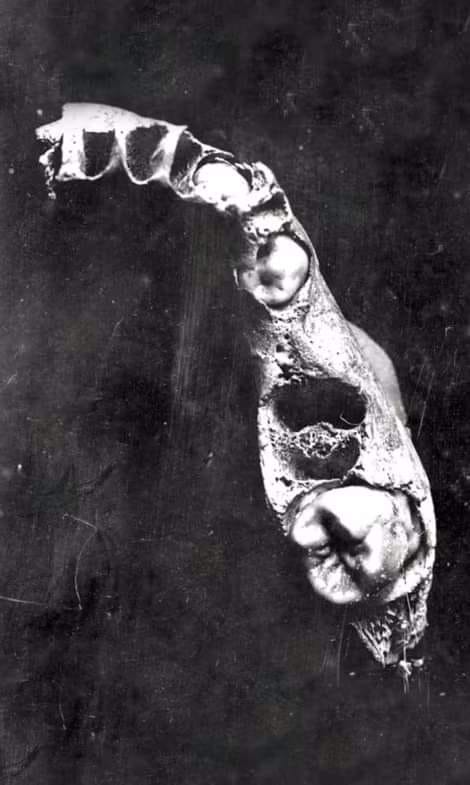One of England’s most enduring historical mysteries revolves around the disappearance of two young princes who vanished without a trace. This enigmatic case has captivated historians for centuries, and while evidence remains limited, the discovery of two skeletons in the Tower of London in 1674 has fueled speculation and theories. These remains are widely believed to belong to Edward V and his younger brother, Richard, Duke of York, who were last seen in the Tower in 1483. Their fate remains a haunting question, underscoring themes of royal intrigue, betrayal, and the dark side of power.

In 1674, laborers working near the White Tower at the Tower of London made a remarkable discovery. While dismantling parts of the Tudor and Medieval Palace, they unearthed two small skeletons hidden in a chest buried approximately ten feet beneath a staircase. John Knight, chief surgeon to King Charles II, examined the remains and noted that the size of the bones corresponded to the ages of the missing princes, believed to be thirteen and eleven at the time of their disappearance. This discovery set the stage for centuries of speculation and debate.
The exact location of the skeletons’ discovery, however, has been a subject of contention. Some reports suggest the bones were found outside the White Tower rather than within its confines. Despite this ambiguity, the find captured significant royal attention. Initially, the remains were largely disregarded, but they were later formally recognized as potentially belonging to the princes. By order of Charles II, the bones were placed in a marble urn and interred in Westminster Abbey among royal relics. This act solidified their association with the tragic story of the Princes in the Tower.
The “Princes in the Tower” refers to Edward V and his brother, Richard, Duke of York, sons of King Edward IV and Queen Elizabeth Woodville. After the death of Edward IV, the young Edward was briefly proclaimed king, with his uncle, Richard, Duke of Gloucester (later King Richard III), serving as Lord Protector. However, political machinations soon unfolded. Richard III declared the boys illegitimate, disinheriting them and seizing the throne for himself. The young princes were last seen alive in the Tower of London in 1483, leading many to suspect foul play orchestrated by their ambitious uncle.
The mystery surrounding the princes’ fate has spawned numerous theories over the centuries. Many historians argue that Richard III ordered their assassination to secure his claim to the throne, a theory bolstered by his swift coronation following their disappearance. Others propose alternative scenarios, suggesting the princes might have been quietly exiled or even survived into adulthood under assumed identities. Some theorists have implicated other figures, such as Henry Tudor (later Henry VII), in their disappearance, claiming that rival factions within the court could have been responsible.
The discovery of the skeletons in 1674 reignited interest in the case, offering potential validation for the theory that the princes were murdered within the Tower. However, the absence of definitive forensic evidence has left the true identity of the remains an open question. This lack of closure has kept the mystery alive, inviting further investigation and debate.
In 1933, the case gained renewed attention when the bones were reexamined. This examination uncovered a jawbone and molar believed to belong to Richard, Duke of York. Photographs from this investigation stirred public intrigue and spurred calls for a more thorough analysis. Despite advances in forensic science, the remains have remained undisturbed in Westminster Abbey, with royal permission for DNA testing yet to be granted. This reluctance has preserved the mystery, leaving historians and scientists to speculate on what modern techniques might reveal.
Many argue that DNA analysis could provide a conclusive answer to this centuries-old enigma, offering clarity on the identity of the skeletons. However, without royal approval, such analysis remains out of reach. This ongoing uncertainty has allowed the story of the Princes in the Tower to endure, captivating new generations with its layers of intrigue and unanswered questions.
The tale of the Princes in the Tower is more than a historical mystery—it is a symbol of the perils of political ambition and the human cost of power struggles in medieval England. The potential fate of Edward V and Richard of York serves as a chilling reminder of how betrayal and intrigue could unravel even the most powerful dynasties. Their story raises poignant questions about justice, the reliability of historical records, and the role of narrative in shaping royal legacies.
The enduring fascination with this case reflects its broader significance in England’s royal history. It exemplifies the precarious nature of succession and the lengths to which individuals would go to secure or protect power. As historians continue to explore the mystery, the story of the princes remains a potent chapter in the annals of history, shrouded in intrigue and shadowed by the ambitions of a powerful dynasty.
For now, the fate of Edward V and Richard, Duke of York, remains one of history’s great unsolved puzzles. The skeletons discovered in 1674 have provided tantalizing clues but no definitive answers. Until further evidence emerges, the story of the Princes in the Tower will continue to captivate the imagination, serving as a timeless reminder of the complexities and dark undercurrents of royal history.





